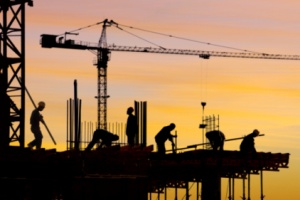 In reponse to a suit brought by a construction crane owner/operator association, a federal court has ruled that the crane provisions of the New York City building code cannot be preempted by the less-strict OSHA standard
In reponse to a suit brought by a construction crane owner/operator association, a federal court has ruled that the crane provisions of the New York City building code cannot be preempted by the less-strict OSHA standard
Lawyers for the argued that OSHA's crane standards were only intended to protect construction workers and should not invalidate broader city building codes aimed at safeguarding the general public as well as workers.
Writing on the U.S. Department of Labor's Work in Progress blog, Solicitor of Labor Patricia Smith provided a backdrop for the case, describing a 2008 construction crane collapse that resulted in seven fatalities and more than tweny injured -- inluding both construction workers and people who had simply been near the site when the crane collapsed. Several buildings were destroyed and eighteen had to be evacuated, leaving many people homeless.
"I lived in New York City then, and remember well the shock and sorrow that we all felt," writes Smith. "As a result of the accident, New York City revised its building code, adding new requirements for the use of construction cranes in order to provide its residents with protection from the possibility of a similar devastating accident."
OSHA at that time was updating its own requirements for construction cranes. During the public comment process, New York City submitted a request that the new federal requirements would not preempt the city ones. Smith explains: "Preemption is a legal concept arising from the fact that federal laws generally take priority over state and local requirements, and in some cases may invalidate the state and local laws."
OSHA said its 2010 standard for construction cranes that its standards do not generally preempt city building codes because those codes are intended to protect all of the inhabitants of a city, and do not impose requirements based on employment status.
The court’s decision gave special weight to New York City’s interest in protecting its residents, especially in a city with the population density of New York. It noted the large number of deaths and injuries that had been caused by crane accidents before the city adopted its new rules.
“If a crane falls in New York City, someone is almost always there to hear it – and be hit by it,” the judge said.
Click here to read the entire blog post.
NYC crane laws trump fed regs in court challenge
Crane operators preferred looser OSHA regs
